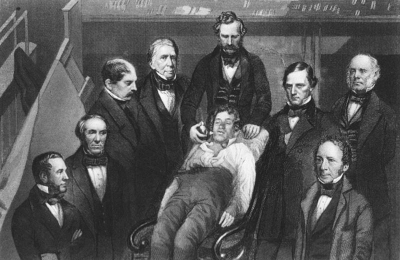
Anaesthesia is given to a patient before a surgery so that he does not feel pain during the procedure. A look at the doctors who pioneered modern anaesthesia.
The word ‘anaesthesia’ means ‘without sensation. It comes from the Greek words an meaning without and aisthesis, meaning ‘sensation’. Anaesthesia is given to a patient before a surgery so that he does not feel pain.
Anaesthesia has been used in surgeries since ancient times. Around 600 BCE, Sushruta, known as the founding father of surgery’, used cannabis vapours to sedate patients for surgery. For a long time, physicians made use of hypnotherapy, opium, alcohol, etc., but they were not totally effective and had side effects.
On October 16, 1846 (observed today as Ether Day), William T.G. Morton, a dentist and John Collins Warren, a surgeon, made history with their first public demonstration of modern anaesthesia at the Massachusetts General Hospital in Boston, United States. The patient, Glenn Abott, had a tumour on his neck. Morton made him inhale ether vapour until he was suitably sedated, and Warren removed the tumour. Abott did not feel any pain. Morton called his creation Letheon after the Lethe River in Greek mythology, as its water is believed to erase ‘painful memories.
The anaesthesia used today is a mixture of various derivatives of ether and inhalable gases such as nitrous oxide (laughing gas). It is administered by skilled anaesthesiologists through machines that measure the specific amount necessary to keep the patient unconscious during the surgery.
Picture Credit : Google




